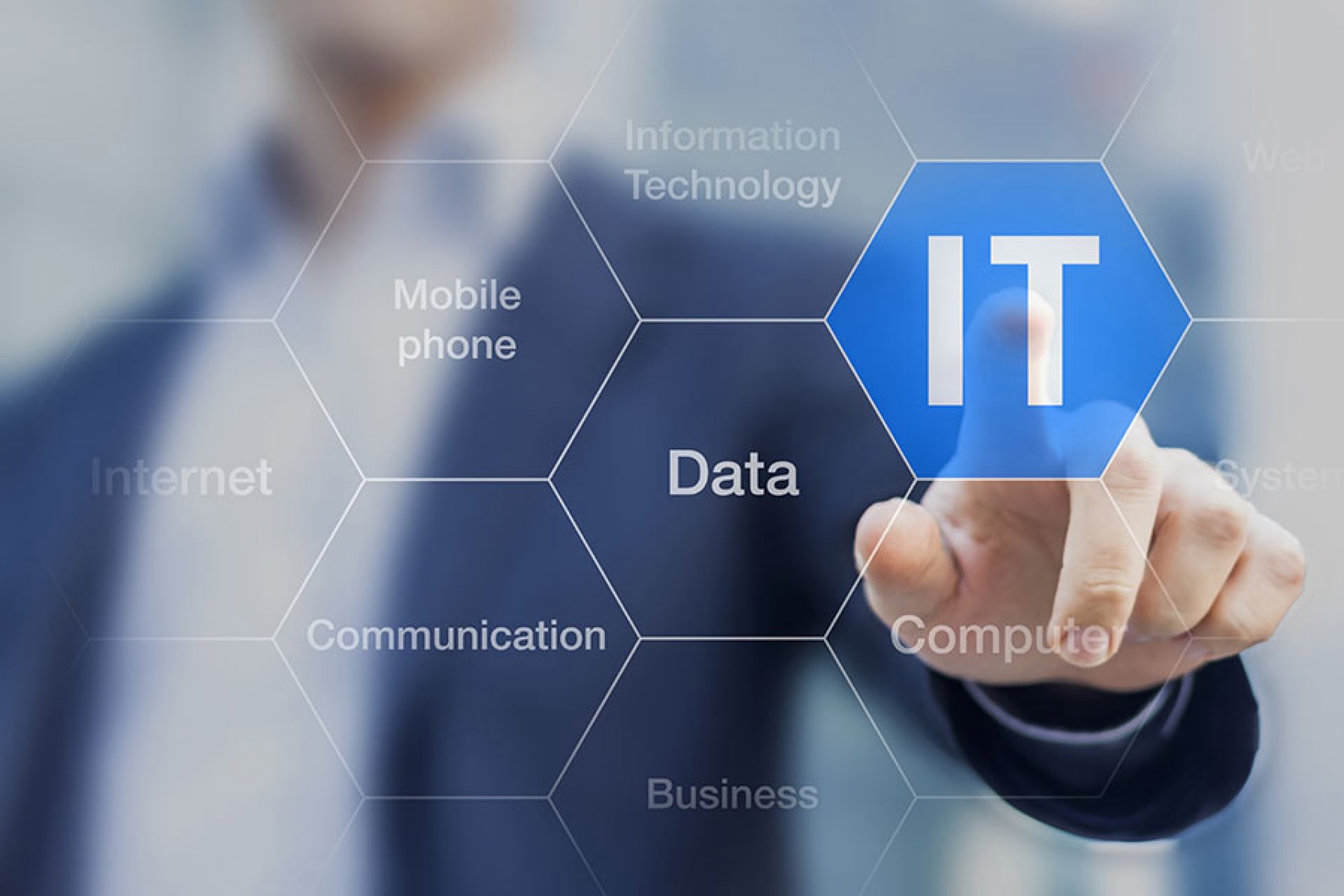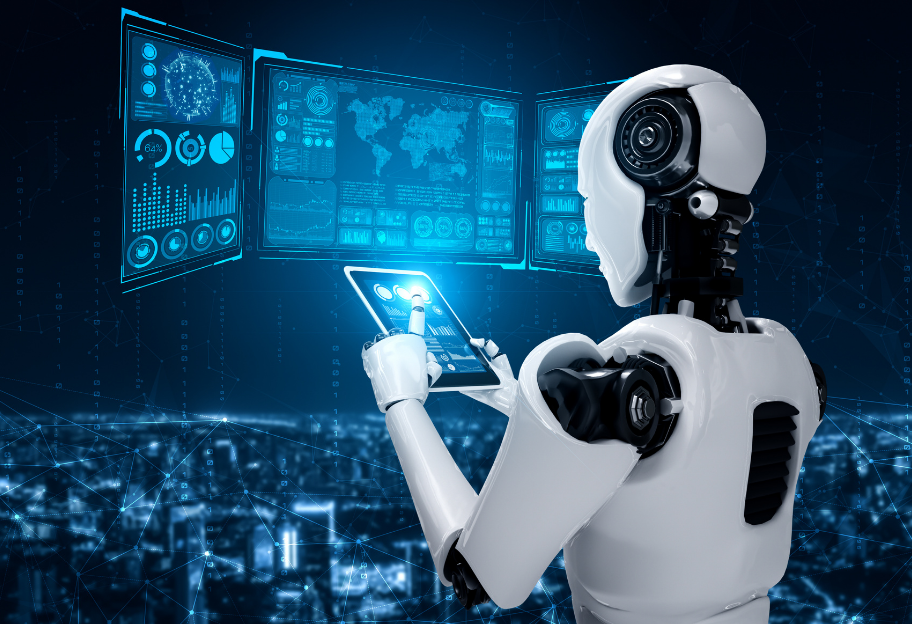Information Technology (IT) is a broad and dynamic field that encompasses the use of computers, software, networks, and electronic systems to store, process, transmit, and retrieve information. The term “information technology” has become synonymous with the digital age, shaping the way individuals, businesses, and societies operate in the modern world. This essay will delve into the working processes of information technology, exploring its key components, functions, and its transformative impact on various aspects of our lives.
Key Components of Information Technology:
- Hardware: Information technology relies heavily on hardware components, which are the physical devices that make up computing systems. This includes computers, servers, storage devices, and networking equipment. The evolution of hardware, from room-sized mainframes to powerful and compact personal devices, has been a driving force in the advancement of IT.
- Software: Software is the set of instructions that govern the behavior of computer systems. Operating systems, application software, and programming languages fall under this category. The development and continuous innovation of software are integral to the functionality and efficiency of information technology.
- Networks: Networking is a fundamental aspect of information technology. It involves the interconnection of computers and other devices to facilitate communication and the sharing of resources. The internet, a global network of networks, is a prime example of how interconnected systems enable the seamless exchange of information.
- Data: Data is the raw material of information technology. It can take various forms, including text, images, videos, and more. Effective data management, storage, and retrieval are crucial for the smooth functioning of IT systems. The advent of big data has added complexity and opportunities for analysis and decision-making.
Working Processes of Information Technology:
- Data Collection: The information technology process begins with the collection of data. This can be achieved through various means, such as sensors, input devices, and user interactions. The collected data can range from user inputs on a keyboard to readings from environmental sensors.
- Data Processing: Once data is collected, it undergoes processing to convert it into meaningful information. This involves the use of algorithms and software to analyze, organize, and manipulate the data. Processing is a critical step in extracting valuable insights and generating outputs.
- Storage: Processed information is then stored in various types of storage devices, including hard drives, solid-state drives, and cloud-based storage systems. The choice of storage depends on factors such as data volume, accessibility requirements, and the need for redundancy and backup.
- Transmission: With the increasing emphasis on connectivity, transmitting information between devices and systems has become a core function of IT. Networks, whether wired or wireless, facilitate the transfer of data, allowing for real-time communication and collaboration.
- Security: Information security is a paramount concern in the field of IT. Security measures, including encryption, firewalls, and authentication protocols, are implemented to protect data from unauthorized access, breaches, and cyber threats.
- User Interface: The user interface (UI) is the point of interaction between users and IT systems. Designing intuitive and user-friendly interfaces is crucial for ensuring that individuals can effectively interact with and utilize the functionalities of IT applications and devices.
- Innovation and Evolution: Information technology is characterized by constant innovation and evolution. Advances in hardware, software, and networking technologies drive the development of new and improved IT solutions. Emerging technologies such as artificial intelligence, blockchain, and the Internet of Things (IoT) continue to reshape the IT landscape.
Impact of Information Technology:
- Business and Commerce: Information technology has revolutionized the business world, enabling more efficient operations, improved communication, and the development of global markets. E-commerce, electronic transactions, and digital marketing are examples of IT-driven transformations in the business sector.
- Communication and Social Interaction: The rise of the internet and social media platforms has transformed the way people communicate and interact. Information technology facilitates instant communication, sharing of ideas, and the formation of online communities, transcending geographical boundaries.
- Education: Information technology has significantly impacted the education sector. The use of computers, online resources, and educational software has transformed teaching and learning methods, making education more accessible and interactive.
- Healthcare: IT plays a vital role in healthcare, from electronic health records and telemedicine to medical imaging and research. Information technology has improved patient care, streamlined administrative processes, and contributed to medical advancements.
- Entertainment and Media: The entertainment industry has been greatly influenced by information technology. Digital streaming, online gaming, virtual reality, and digital content creation are examples of how IT has reshaped the way people consume and participate in entertainment.
Challenges and Future Trends:
- Cybersecurity Challenges: As information technology advances, so do cybersecurity threats. Protecting sensitive information from cyber-attacks is an ongoing challenge, requiring continuous innovation in security measures and protocols.
- Ethical and Privacy Concerns: The collection and use of vast amounts of personal data raise ethical and privacy concerns. Striking a balance between technological advancements and safeguarding individual privacy is an ongoing challenge for the IT industry.
- Artificial Intelligence and Automation: The integration of artificial intelligence and automation is a growing trend in information technology. These technologies have the potential to enhance efficiency and productivity but also raise questions about job displacement and ethical considerations.
- Sustainability: The environmental impact of information technology, including the production and disposal of electronic devices, is a growing concern. Sustainable practices, such as e-waste management and energy-efficient technologies, are becoming increasingly important.
In conclusion, information technology is a multifaceted field that permeates virtually every aspect of modern life. Its working processes, from data collection to innovation, have led to transformative changes in business, communication, education, healthcare, and entertainment. As information technology continues to evolve, addressing challenges such as cybersecurity, ethics, and sustainability will be crucial for ensuring a positive and responsible impact on society.
FAQ
- Information technology
- Information technology jobs
- General dynamics information technology
- What is information technology
- Health information technology
- Information technology salary
- Information technology definition
- Information technology degree
- Health information technology schools
- Health information technology salary




Leave a Reply